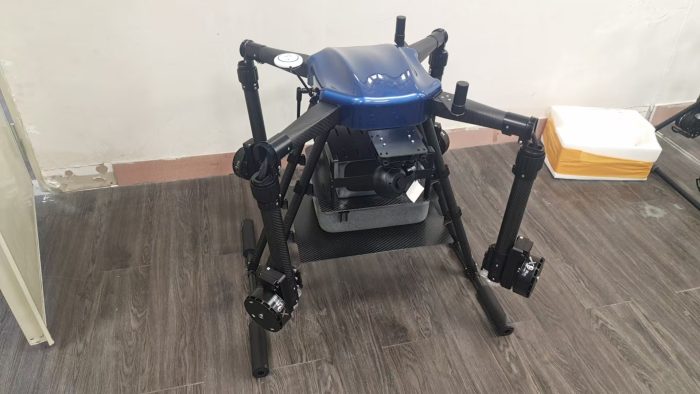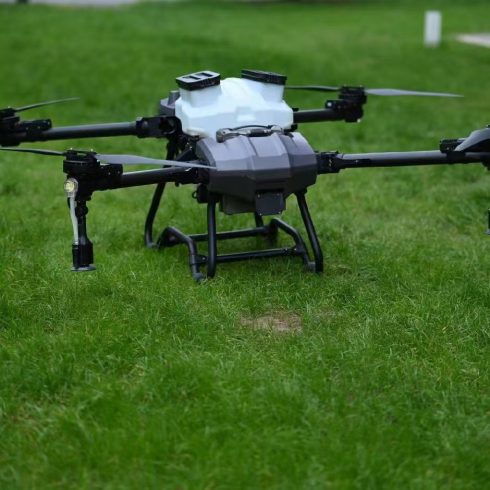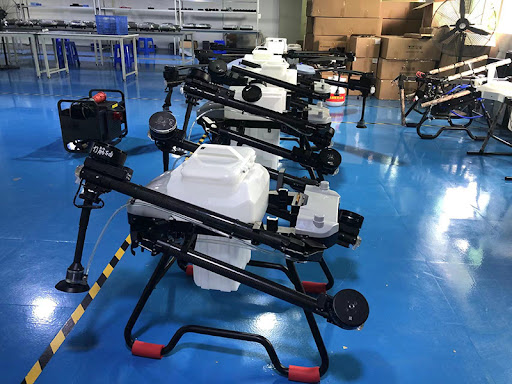![图片[1]-The Role of Drones in Modern Agriculture: Revolutionizing Crop Management-msoen](https://www.msoen.com/wp-content/uploads/2025/04/0f937885e9184642-1024x849.jpg)
![图片[2]-The Role of Drones in Modern Agriculture: Revolutionizing Crop Management-msoen](https://www.msoen.com/wp-content/uploads/2025/04/2caef68db4184641-768x1024.jpg)
![图片[3]-The Role of Drones in Modern Agriculture: Revolutionizing Crop Management-msoen](https://www.msoen.com/wp-content/uploads/2025/04/27fe7401e7184641-1024x768.jpg)
Agriculture has always been a cornerstone of human civilization, but with the rise of technology, farming is becoming increasingly more sophisticated. One of the most groundbreaking innovations in recent years has been the use of drones in agriculture. These unmanned aerial vehicles (UAVs) are transforming how farmers manage crops, monitor field conditions, and apply pesticides. In this article, we’ll explore how drones are revolutionizing modern agriculture, the benefits they offer, and how they’re contributing to the future of sustainable farming.
What Are Drones in Agriculture?
Drones in agriculture refer to UAVs that are equipped with advanced technology, such as high-resolution cameras, infrared sensors, GPS systems, and spraying mechanisms, to aid farmers in their work. Drones can be used for a wide variety of agricultural tasks, including monitoring crop health, assessing soil conditions, and precisely spraying fertilizers and pesticides.
The use of drones in agriculture is part of the broader trend of precision farming, which focuses on using technology to optimize crop yields while minimizing environmental impact. By leveraging drones, farmers can make data-driven decisions that improve productivity and sustainability.
Key Benefits of Using Drones in Agriculture
- Enhanced Crop Monitoring
Traditional crop monitoring methods can be time-consuming and inefficient. Drones, on the other hand, provide a quick and effective way to gather detailed data on crop health. Equipped with cameras and sensors, drones can capture high-resolution images and thermal data, enabling farmers to detect issues like diseases, pests, and nutrient deficiencies early. This allows for timely intervention, reducing the need for broad-spectrum pesticide application and ensuring better crop outcomes.
- Precise Pesticide and Fertilizer Application
One of the most significant advantages of using drones in agriculture is their ability to apply pesticides and fertilizers with incredible precision. Drones equipped with spraying mechanisms can target specific areas of a field that require attention, reducing the amount of chemicals used and minimizing the environmental impact. This precision also ensures that crops receive the right amount of nutrients and protection, ultimately improving yield quality and quantity.
Moreover, drones can cover large areas quickly, which increases operational efficiency and saves valuable time during peak farming seasons.
- Increased Efficiency and Reduced Costs
The efficiency that drones bring to farming operations cannot be overstated. In the past, large-scale crop monitoring and pesticide application required a significant amount of labor and expensive equipment. Drones automate many of these tasks, which cuts down on labor costs and the need for heavy machinery. By flying over fields autonomously, drones can cover vast areas in a fraction of the time it would take using traditional methods.
This increased efficiency leads to lower operational costs and higher productivity, making it possible for farmers to manage larger areas with fewer resources.
- Environmental Sustainability
Drones contribute to environmental sustainability by reducing chemical usage and minimizing the impact of farming on the surrounding ecosystem. By applying pesticides and fertilizers only where needed, drones help to avoid unnecessary chemical runoff and soil degradation. Additionally, by providing accurate data on soil moisture and crop health, drones can help farmers make informed decisions about irrigation and fertilizer application, conserving water and reducing chemical waste.
The Future of Drones in Agriculture
The future of drones in agriculture looks incredibly promising. As technology continues to evolve, drones will become even more capable, offering additional functionalities that can further enhance farming practices. Some of the most exciting future trends include:
- AI and Machine Learning Integration
The integration of AI into drone technology will enable more advanced data analysis, allowing drones to autonomously detect crop diseases, pests, and deficiencies. AI algorithms will also help optimize flight paths, making drone operations more efficient. - Swarm Technology
Drone swarming, where multiple drones work together autonomously to cover larger areas, is another exciting development. This technology allows for greater coverage and faster task completion, making drone use even more scalable for large farms. - Increased Precision with Advanced Sensors
As sensor technology improves, drones will be able to collect even more detailed data, allowing for more precise assessments of soil health, plant growth, and pest activity. This will enable farmers to make highly targeted interventions that maximize crop yields while minimizing environmental impact.
Conclusion
Drones are undoubtedly shaping the future of agriculture. Their ability to improve crop monitoring, increase the precision of pesticide and fertilizer applications, and enhance operational efficiency makes them a vital tool for modern farmers. As technology continues to advance, drones will only become more integrated into the daily operations of agricultural enterprises, helping to feed the world in a more sustainable and efficient manner.
For more information on how drone technology is transforming agriculture, check out Emerging Trends in Pesticide Spraying Drone Technology. Explore the latest innovations and trends driving this agricultural revolution!












暂无评论内容